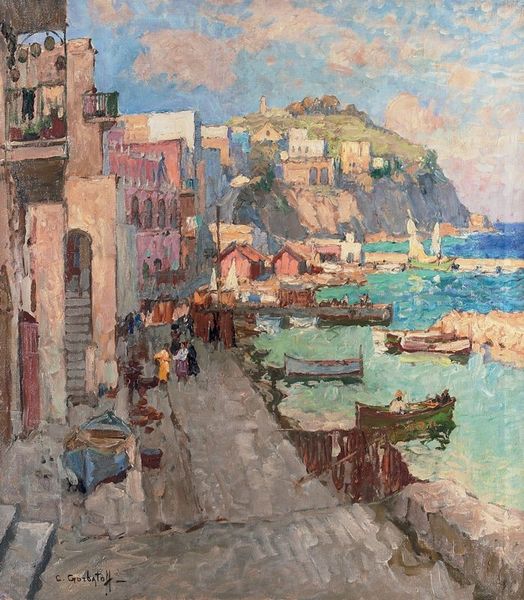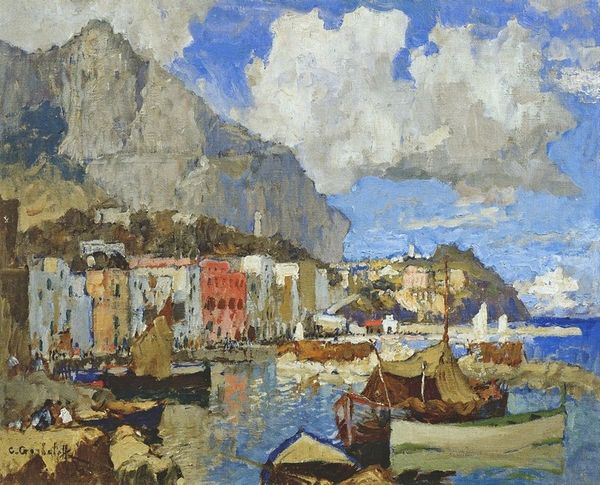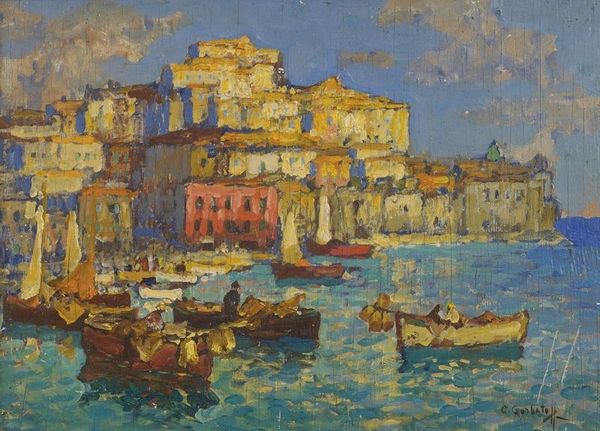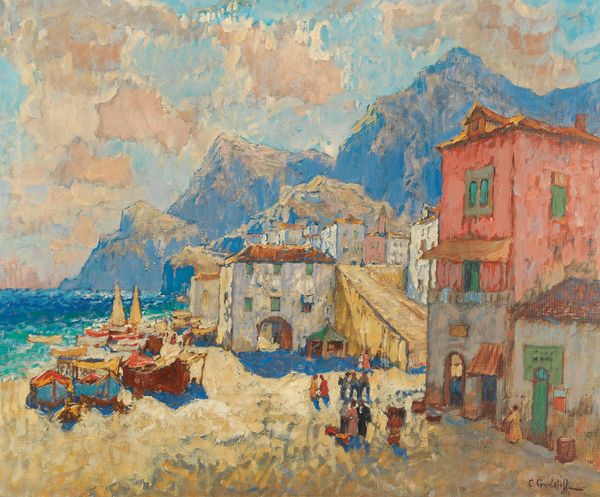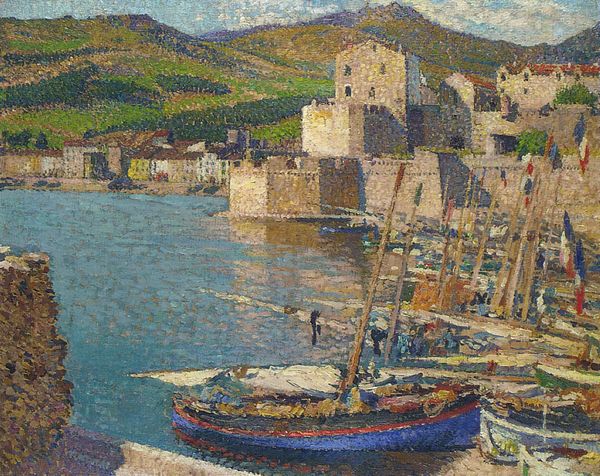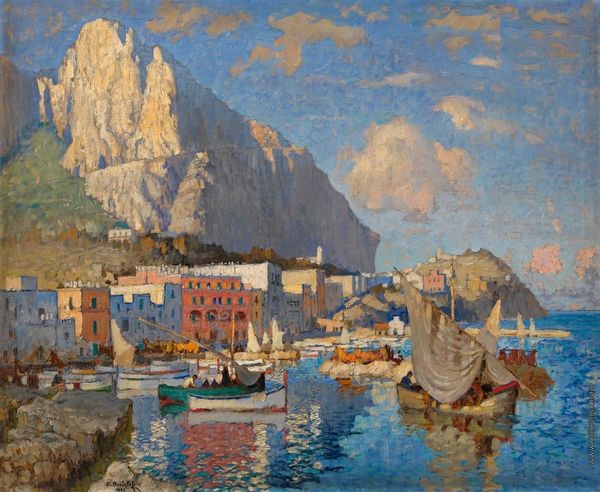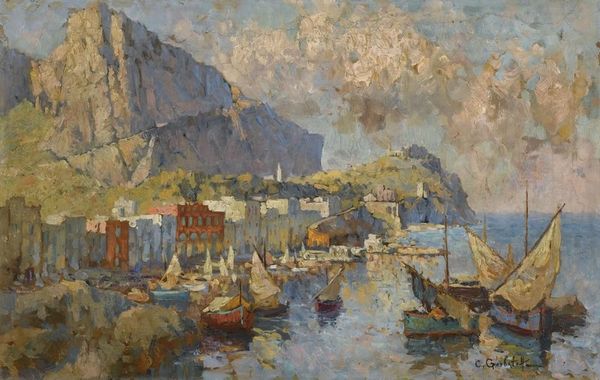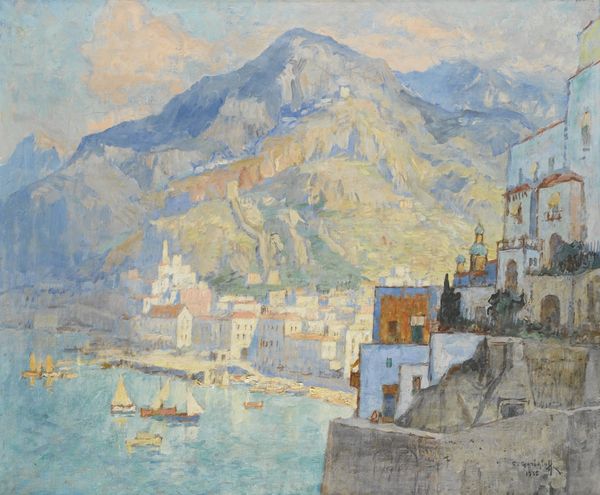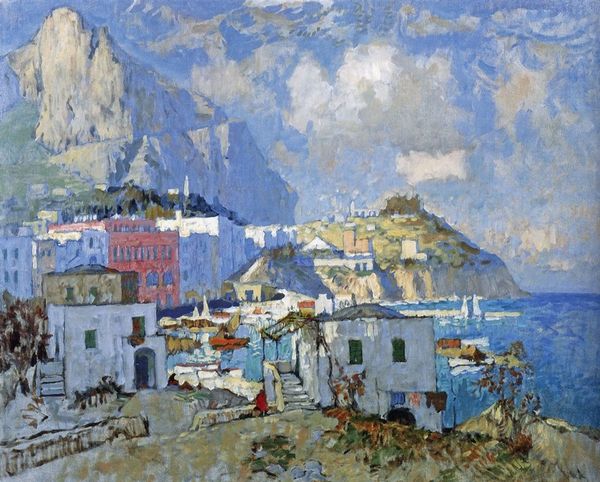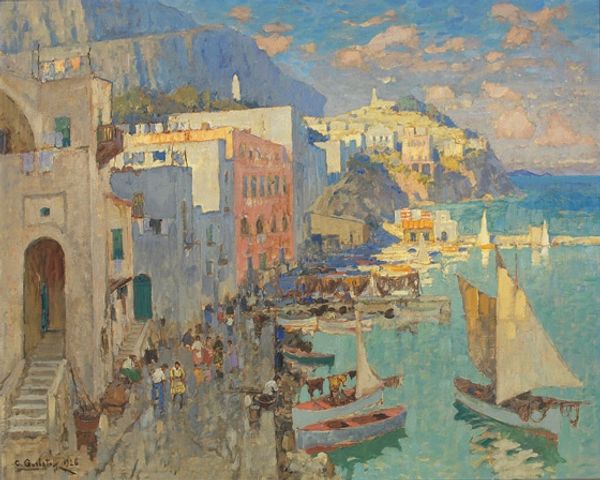
Copyright: Public domain
Editor: This is Konstantin Gorbatov's "Amalfi," painted in 1927, and done with oil paint. The colors feel very warm, and the scene has this almost palpable sunlight on the buildings and water. I’m interested in hearing your insights – what stands out to you when you look at this piece? Curator: I see a compelling depiction of labour and materiality. Consider the visible brushstrokes. They aren't just conveying light and shadow, but highlighting the *act* of painting itself, the very labor involved. This breaks down the hierarchy separating artistic 'genius' from skilled craft. What do you notice about the paint application specifically? Editor: The paint looks very thick and textured in some areas, almost sculpted onto the canvas. Is that significant? Curator: Precisely. This *impasto* technique elevates the material presence of the paint. It’s not merely representational; it’s highlighting the physicality of the oil paint, drawing attention to its cost, source, and production. Now consider Gorbatov’s choice to paint en plein air, outside of a studio, under open sky – a landscape subject. How does this tie in, you think? Editor: Maybe, because painting outside allows Gorbatov to directly incorporate raw, unprocessed information from nature into the making of his work? Curator: That’s very good, exactly. So, ask yourself – does Gorbatov’s impressionistic work offer insight on contemporary themes around labour, class and privilege that we may otherwise overlook? Editor: I see now that Gorbatov prompts a second look on the division of labour, especially the skill and work needed to acquire the raw materials. Thank you for highlighting that. Curator: Of course! Considering the social context of artistic creation provides another entry point.
Comments
No comments
Be the first to comment and join the conversation on the ultimate creative platform.
